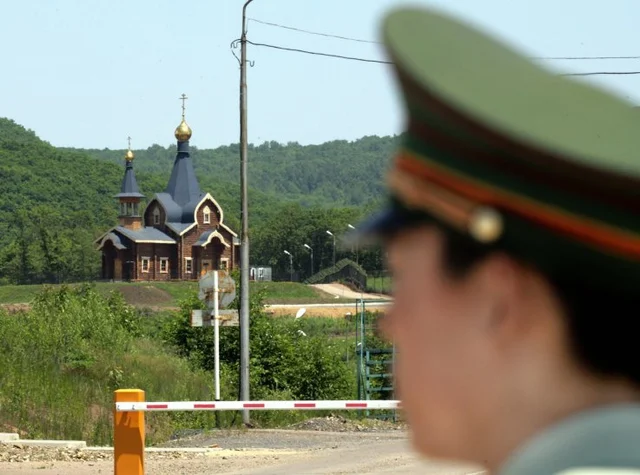
The machines lay idle at the mill in Suifenhe, the Chinese border city roughly 75 miles from the Russian port city of Vladivostok. Without the machines the workers cut, stack and sort the wood by hand, continuing work in a region that felt it had remained largely untouched by the new coronavirus outbreak in Wuhan.
“This epidemic felt like it was very far away,” Su Wei, who heads production and sales at the wood-processing factory, told Reuters. The city is more than 1,200 miles from Wuhan, the central Hubei province capital where the novel virus was first reported late last year.
But now the secluded, quiet border town has become a point of strain between China and Russia who in recent years touted their “strategic partnership” as the two nations remain at loggerheads with the west. With the land border between the nations now closed, a riff between local and state governments has undermined the return of foreign nationals.
Though China had seen coronavirus cases decline since mid-March, when a spokesperson for the National Health Commission (NHC) told reporters, “Broadly speaking, the peak of the epidemic has passed for China… The increase of new cases is falling.” The country has since battled to contain a rise in imported cases, many from Russia.
On Sunday, local Russian media reported 6,060 confirmed new cases of the virus in 24 hours, bringing the country’s total to 42,853 with 361 fatalities.
“The shutdown of borders between the two countries has demonstrated the awkward situation China faces when dealing with an ally like Russia,” Wu Qiang, an independent scholar formerly at Beijing’s Tsinghua University, told The Guardian.

The mill is but one example of this strain. The nearly 200 workers who maintained the plant during peak logging season had been fearful of the virus, and two-thirds did not return to work in the Heilonjiang province town where street and shop signs are written in both Russian and Chinese.
“They very clearly said ‘we are scared, so we don’t want to come’, and we can’t force them to come,” said Su.
More than 2,000 Chinese nationals, believing they could receive better healthcare at home, crossed into China from Russia before the border was closed on April 7, stranding hundreds more in Russia. This influx of nationals, returning from as far as Moscow in the country’s west, turned the quiet town (population 70,000) into China’s new COVID-19 hotspot.
According to The Guardian, which reviewed a statement from the Chinese consulate in Vladivostok on Thursday, 346 Chinese nationals who travelled through Suifenhe contracted the disease. Reuters reported the town had 322 of 326 imported cases throughout the province only three days before. As of Thursday, China had a total of 1,534 imported cases, according to China’s NHC.
Local authorities in Suifenhe are watching as the lockdown strains the economy, forcing residents to stay at home for stretches of three days, reminiscent of the Wuhan response where medical teams cordoned streets and patients in a desperate attempt to contain the spread of the virus. The state-run media in China has since called these efforts “a battle to defend Suifenhe.”
The strain between the two nations was underscored further during a diplomatic exchange between the Chinese consulate in Vladivostok and the Russian region bordering China which held 330 stranded Chinese nationals.
When Russian authorities in Primorsky Krai, the border region, announced they planned to return the stranded nationals, the Chinese consulate said the announcement was “inaccurate.”
Russian officials then removed mention of the planned swap from their website.
*story by NewsWeek